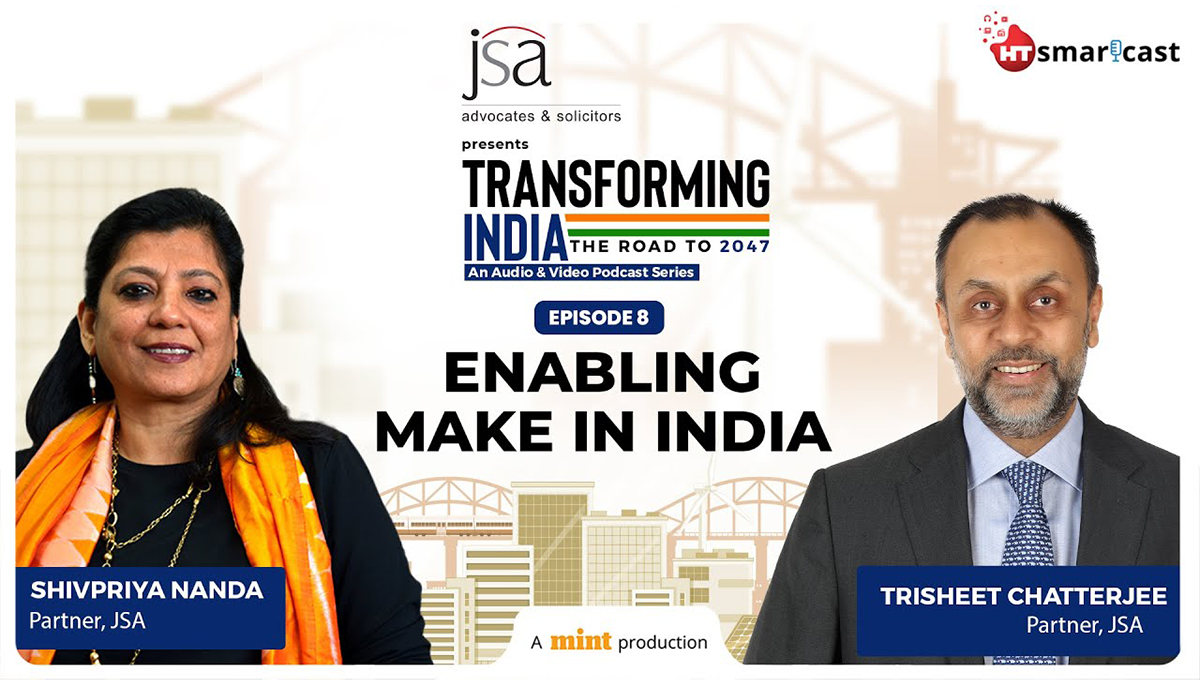Watch our latest episode of JSA Live by Partner Megha Arora, where she dives into India’s role in global climate action and its promising energy transition journey with a focus on renewable energy, electric mobility, energy storage, energy efficiency, and decentralization, India aims to achieve 500 GW of renewable energy capacity by 2030 and have 30% electric vehicles on the road.
Transcript:
As one of the fastest growing economies of the world and the third largest emitter of greenhouse gases (next only to USA and China), India has a crucial role in the global action on climate change. As per the Economic Survey 2022-23, despite the adverse impacts of Covid-19 on the economy, India has enhanced its climate ambition manifold and embarked on a long-term strategy towards a low GHG emission-based development.
We have an unprecedented opportunity to chart our course of economic growth while addressing the sustainability imperative with a clear, realizable, and actionable path to energy transition.
India is investing heavily in renewable energy sources such as solar, wind, hybrid, hydro, and biomass. The country has set ambitious targets to achieve 500 GW of renewable energy capacity by 2030. We have already achieved renewable energy capacity of 172 GW and another 129 MW is under implementation.
The government has undertaken several measures to promote renewable energy, including providing subsidies, tax incentives, and low-interest loans to renewable energy developers. It has also implemented policies to encourage the adoption of renewable energy by industries, including a renewable purchase obligation (RPO), which mandates that a certain percentage of electricity consumption must come from renewable sources.
India has also been promoting international cooperation for renewable energy development through initiatives such as the International Solar Alliance (ISA), which aims to increase the uptake of solar energy globally.
India is also promoting the adoption of electric vehicles through various policy initiatives and incentives. The government aims to have 30% of all vehicles on the road to be electric by 2030.
As the adoption of renewable energy sources grows, the need for energy storage solutions is also increasing. India is looking into various energy storage technologies like batteries, hydrogen, and compressed air.
Energy efficiency measures like smart meters, LED lighting, and building codes are being promoted across the country to reduce energy consumption and improve efficiency.
India is moving towards a more decentralized energy system, with an emphasis on local power generation and distribution. This model has the potential to improve energy security, reduce transmission losses, and create local jobs.
Overall, the future of energy transition in India looks promising, with a focus on renewable energy, electric mobility, energy storage, energy efficiency, and decentralization.
While India has made significant progress in energy transition efforts, there are still challenges that need to be addressed, including issues related to grid stability, transmission infrastructure, and land acquisition. Other key legal and regulatory challenges include Policy and regulatory uncertainty, Tariff and pricing risks, environmental and social risks, force majeure, foreign exchange risks, protracted dispute resolution process.









